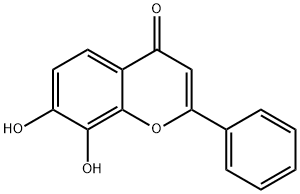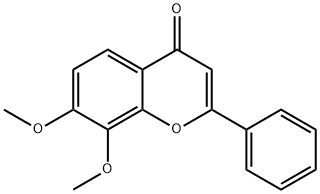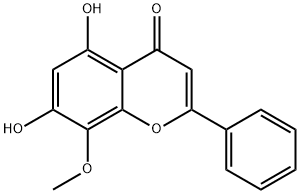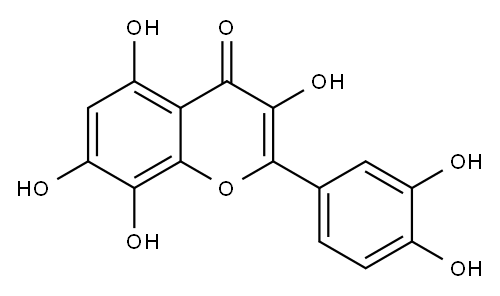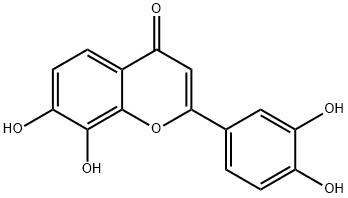7,8-DihydroxyflavoneHydrate , 10mMinDMSO , 38183-03-8
CAS NO.:38183-03-8
Empirical Formula: C15H10O4
Molecular Weight: 254.24
MDL number: MFCD00006836
EINECS: 253-812-4
| Pack Size | Price | Stock | Quantity |
| 1ml | RMB559.20 | In Stock |
|
| others | Enquire |
PRODUCT Properties
| Melting point: | 243-246°C |
| Boiling point: | 494.4±45.0 °C(Predicted) |
| Density | 1.443±0.06 g/cm3(Predicted) |
| FEMA | 4830 | 7,8-DIHYDROXYFLAVONE |
| storage temp. | Inert atmosphere,Room Temperature |
| solubility | DMSO: soluble24mg/mL |
| form | solid |
| pka | 6.86±0.40(Predicted) |
| color | Yellow or tan |
| Stability: | Stable for 1 year from date of purchase as supplied. Protect from moisture. Solutions in DMSO or ethanol may be stored at -20°C for up to 1 week. |
| InChI | InChI=1S/C15H10O4/c16-11-7-6-10-12(17)8-13(19-15(10)14(11)18)9-4-2-1-3-5-9/h1-8,16,18H |
| InChIKey | COCYGNDCWFKTMF-UHFFFAOYSA-N |
| SMILES | C1(C2=CC=CC=C2)OC2=C(O)C(O)=CC=C2C(=O)C=1 |
| LogP | 2.760 (est) |
| CAS DataBase Reference | 38183-03-8(CAS DataBase Reference) |
Description and Uses
7,8-Dihydroxyflavone(7,8-DHF) is a naturally occurring flavone found in the tree Godmania aesculifolia. It is a selective tyrosine kinase receptor B(TrkB) agonist that has neurotrophic effects in various neurological diseases such as stroke and Parkinson's disease. 7,8-Dihydroxyflavone binds to the TrkB receptors in a similar way to BDNF, or brain derived neurotrophic factor. When the TrkB receptor is activated, neuroprotective and neurogenetive effects occur in neurons, which tend to affect the dendrites. Dendrites are what reach out from the neurons into the synapse to participate in signaling with other neurons. 7,8-DHF has been shown to promote the growth of these dendrites, and to help restore communication between neurons in animal models.
7,8-Dihydroxyflavone is disubstituted flavone that acts as a small-molecule TrkB agonist. 7,8-Dihydroxyflavone has been shown to reverse memory deficits and BACE1 elevation in a mouse model of Alzheimer''s disease. 7,8-Dihydroxyflavone may also provide a therapeutic option in the treatment of other neorological disorders such as Rett syndrome and PTSD. It has recently been shown to counteract the inhibition of NMDA receptor caused by lead poisoning and confer protective effects in live rats.
Safety
| Symbol(GHS) |  GHS07 |
| Signal word | Warning |
| Hazard statements | H315-H319-H335 |
| Precautionary statements | P261-P305+P351+P338 |
| Hazard Codes | Xn |
| Risk Statements | 22 |
| Safety Statements | 24/25 |
| WGK Germany | 3 |
| RTECS | DJ3004000 |
| HS Code | 2932990090 |

